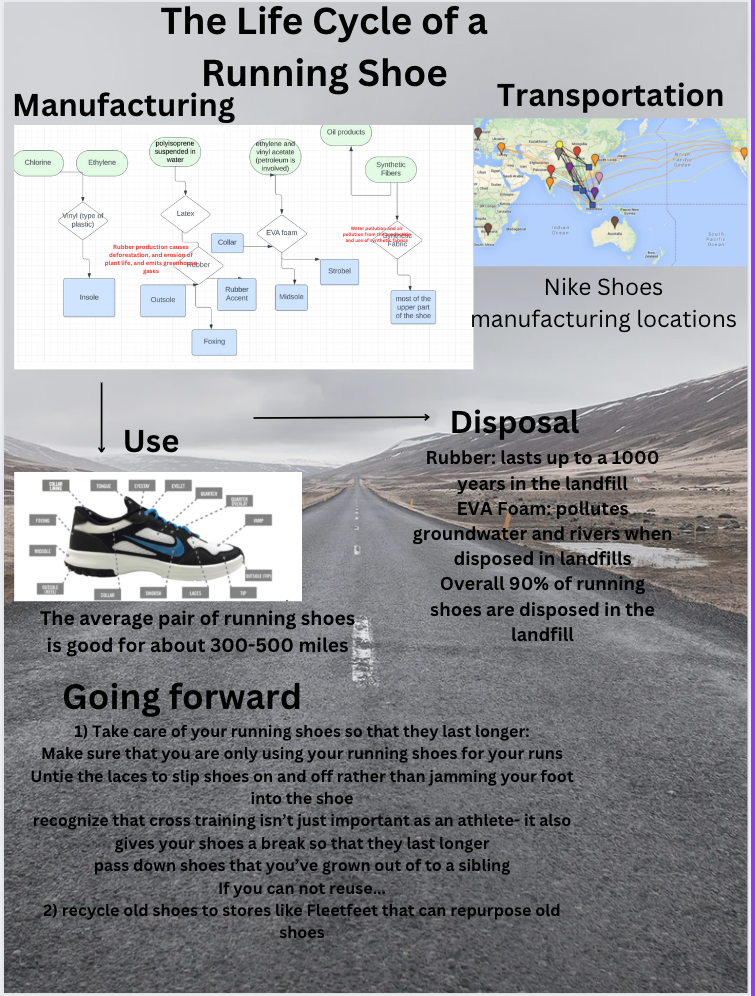What happens to your Nike’s when you are done with them, and how you can get the most out of them?

Whether or not you play a sport, run recreationally, or simply play a pick up game every once in a while, running shoes are probably a part of your life in some shape or form. I personally have been a runner since I was 10, competing in middle school, and now just enjoying it recreationally. I am very familiar with the process of buying new running shoes…and wearing them out. And as much as I love the activity, our running shoes have a less than savory life before and after us.
The largest component in running shoes is synthetic fabrics, which cause water and air pollution with their production. These, along with latex rubber, plastic, and EVA foam are all die cut and and welded together with concrete filling. The amount of transportation involved in this process can not be overstated. See the map above in the infographic that details the journey that a Nike running shoe makes as it is put together. The shoes are then packaged in individual cardboard boxes and shipped. You will use them for about 300-500 miles and then 90% of all running shoes will be disposed in landfills where almost every part: the foam, plastic, rubber, and fabric, will cause environmental damage. The rubber is perhaps the most unsustainable part of the process, lasting up to 1000 years in the landfill.
The biggest thing you can do to break this cycle is extend the use of your shoes. Finding more sustainable brands is great, but if the price point isn’t feasible for you, simple steps like untying laces before putting on and taking off shoes can make them last longer. See the infographic above for more suggestions.
More generally, it is important to start to appreciate all of the energy that goes into the products that we often take for granted. Your running shoes required so much labor and respecting them and using them the best that you can reflects the mindset of the circular economy, rather than the mindset of mindless consumption that is so prevalent in our society.
Source and resources to explore:
https://www.vinylinfo.org/resources/how-is-vinyl-made/
https://www.nike.com/a/parts-of-shoe-anatomy
https://sciencing.com/harden-rubber-8760550.html)
https://sewguide.com/synthetic-fabrics-fibers/ http://www.madehow.com/Volume-1/Running-Shoe.html#ixzz8I94NYDf4
https://www.tandfonline.com/doi/full/10.1080/2058802X.2020.1805218
https://www.runnersworld.com/gear/a33233314/how-many-miles-do-running-shoes-last/
https://www.nike.com/a/recycle-old-shoes
https://www.verywellfit.com/how-to-make-running-shoes-last-longer-6503018
